
John Alexander Logan was an American soldier and politician. He served in the Mexican–American War and was a general in the Union Army in the American Civil War. He served the state of Illinois as a state Representative, a U.S. Representative, and a U.S. Senator and was an unsuccessful candidate for Vice President of the United States as James G. Blaine's running mate in the election of 1884. As the 3rd Commander-in-Chief of the Grand Army of the Republic, he is regarded as the most important figure in the movement to recognize Memorial Day as an official holiday.

Benjamin Oliver Davis Sr. was a career officer in the United States Army. One of the few black officers in an era when American society was largely segregated, in 1940 he was promoted to brigadier general, the army's first African American general officer.
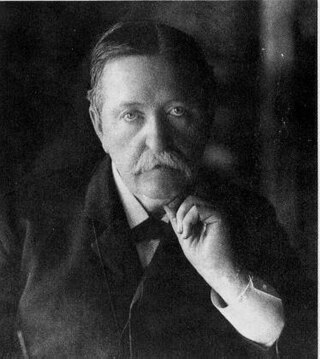
John Russell Young was an American journalist, author, diplomat, and the seventh Librarian of the United States Congress from 1897 to 1899. He was invited by Ulysses S. Grant to accompany him on a world tour for purposes of recording the two-year journey, which he published in a two-volume work.

Russell Alexander Alger was an American politician and businessman. He served as the 20th governor of Michigan, U.S. Senator, and U.S. Secretary of War. Alger's life was a "rags-to-riches" success tale. He became an army officer, financier, lumber baron, railroad owner, and government official in several high offices. He was supposedly a distant relation of author Horatio Alger.
The Washington Star, previously known as the Washington Star-News and the WashingtonEvening Star, was a daily afternoon newspaper published in Washington, D.C., between 1852 and 1981. The Sunday edition was known as the Sunday Star. The paper was renamed several times before becoming Washington Star by the late 1970s.

Henry Watterson, the son of a U.S. Congressman from Tennessee, became a prominent journalist in Louisville, Kentucky, as well as a Confederate soldier, author and partial term U.S. Congressman. A Democrat like his father Harvey Magee Watterson, Henry Watterson for five decades after the American Civil War was a part-owner and editor of the Louisville Courier-Journal, which was founded by Walter Newman Haldeman and would be purchased by Robert Worth Bingham in 1919, who would end the Pulitzer Prize-winning journalist's association with the paper.
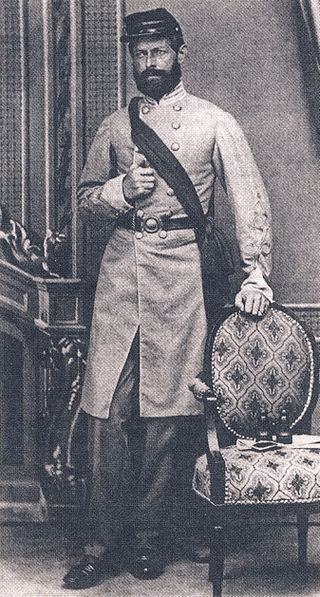
Henry Wirz was a Swiss-American convicted war criminal who served as a Confederate Army officer during the American Civil War. He was the commandant of Andersonville Prison, a Confederate prisoner-of-war camp near Andersonville, Georgia, where nearly 13,000 Union Army prisoners of war died as result of inhumane conditions. After the war, Wirz was tried and executed for conspiracy and murder relating to his command of the camp; this made the captain the highest-ranking soldier and only officer of the Confederate Army to be sentenced to death for crimes during their service. Since his execution, Wirz has become a controversial figure due to debate about his guilt and reputation, including criticism over his personal responsibility for Andersonville Prison's conditions and the quality of his post-war trial.

The Andersonville National Historic Site, located near Andersonville, Georgia, preserves the former Andersonville Prison, a Confederate prisoner-of-war camp during the final fourteen months of the American Civil War. Most of the site lies in southwestern Macon County, adjacent to the east side of the town of Andersonville. The site also contains the Andersonville National Cemetery and the National Prisoner of War Museum. The prison was created in February 1864 and served until April 1865.

Rock Creek Cemetery is an 86-acre (350,000 m2) cemetery with a natural and rolling landscape located at Rock Creek Church Road, NW, and Webster Street, NW, off Hawaii Avenue, NE, in the Petworth neighborhood of Washington, D.C., across the street from the historic Soldiers' Home and the Soldiers' Home Cemetery. It also is home to the InterFaith Conference of Metropolitan Washington.

John McElroy (1846–1929) was an American printer, soldier, journalist and author, known mainly for writing the novel The Red Acorn and the four-volume Andersonville: A Story of Rebel Military Prisons, based upon his lengthy confinement in the Confederate Andersonville prison camp during the American Civil War.
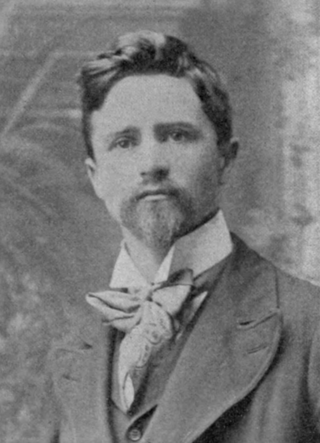
Sigvald Asbjørnsen was a Norwegian-born American sculptor.

David Legge Brainard was a career officer in the United States Army. He enlisted in 1876, received his officer's commission in 1886, and served until 1919. Brainard attained the rank of brigadier general and served during World War I as U.S. military attaché in Lisbon, Portugal.
Byron Andrews was an American journalist for Chicago Inter Ocean and National Tribune, private secretary to U.S. President Ulysses S. Grant on his Industrial Excursions to Mexico and Cuba, a statesman, a lecturer and an author. He was third owner of the National Tribune newspaper and publishing company in Washington, D.C.
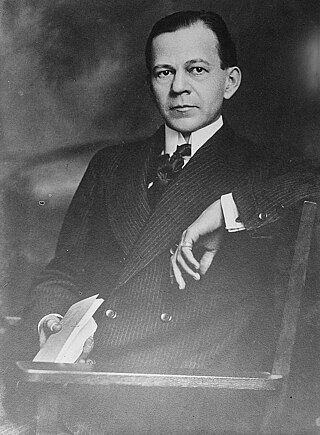
William Byron Colver was chairman of the Federal Trade Commission and general editorial director of the Scripps‐Howard newspapers. He was a member of the price-fixing committee of the War Industries Board during World War I.

Stephen French, Esq. was an American educator, lawyer and Civil War veteran. He was known for being captured by the Confederate army during the American Civil War, imprisoned at Andersonville prisoner-of-war camp, having escaped captivity for five days in the forests of Georgia, and being re-captured and re-imprisoned at Andersonville. His personal account, titled "Recollections of Five Days in the Forest of Georgia 1864. Escape from Andersonville Prison. Recapture and Final Release" was published in The National Tribune as a serial in 1926 under the title "Experiences of a Prisoner in Dixieland."
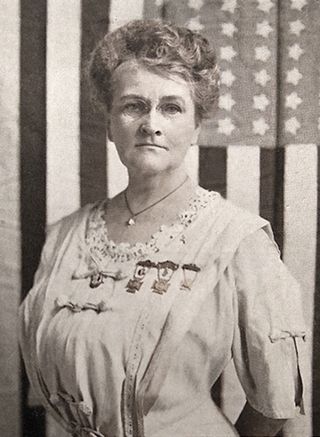
Sarah Isabel Worrell Ball McElroy was an American journalist and newspaper editor. She worked first in the western United States and later in Washington, D.C., where she became one of the first women admitted to the United States Senate Daily Press Gallery. She was active in the Woman's Relief Corps and became the editor of the National Tribune, a weekly publication of the Grand Army of the Republic.

Mary Logan Tucker was an American political activist. She attended the Convent of the Visitation, Georgetown, in Washington, D.C. Tucker organized and founded the Georgetown Alumnae Association and was elected and served as its first president in 1893. She was an active member of the Illinois State Association and the Illinois State Society of Washington, D.C., from the late nineteenth century until her death. She also served as the president of the Dames of the Loyal Legion of the United States from 1924 to 1928, and was a member of the Society of the Daughters of the American Revolution, the Society of the Army of the Tennessee, and the Legion of Loyal Women.

George Kennedy McGunnegle was a career officer in the United States Army. He received a direct commission from civilian life in 1873, and served until retiring 1919. McGunnegle attained the rank of colonel and was a veteran of the American Indian Wars, Spanish–American War, United States Military Government in Cuba, Philippine–American War, and World War I. He was most notable for his service in command assignments including the 1st Infantry Regiment and the Fort McDowell Recruit Depot in California.

John M. K. Davis was a career officer in the United States Army. A Union Army veteran of the American Civil War, after graduating from Georgetown University in 1862 and initial military service with the 3rd Maryland Cavalry Regiment in 1863, Davis attended the United States Military Academy. He graduated in 1867, and served until reaching the mandatory retirement age of 64 in January 1908. Davis served primarily in Field Artillery assignments, was a veteran of the Spanish–American War, and attained the rank of brigadier general.

















